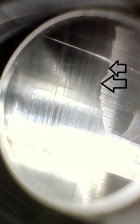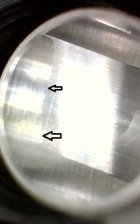Alex Wheeler
Site $$ Sponsor
You can do it that way. I am just throwing out all the methods commonly in use. I have never really posted what I do because I dont have a set way of doing it. I make decisions based on what I see once I have an indicator in the barrel. If you choose to run the reamer in the whole way then you would want the back end dialed in. The one thing everyone can agree on is that the throat needs to be concentric to the bore. Or maybe the grooves? Ok, we cant all agree, lol.












